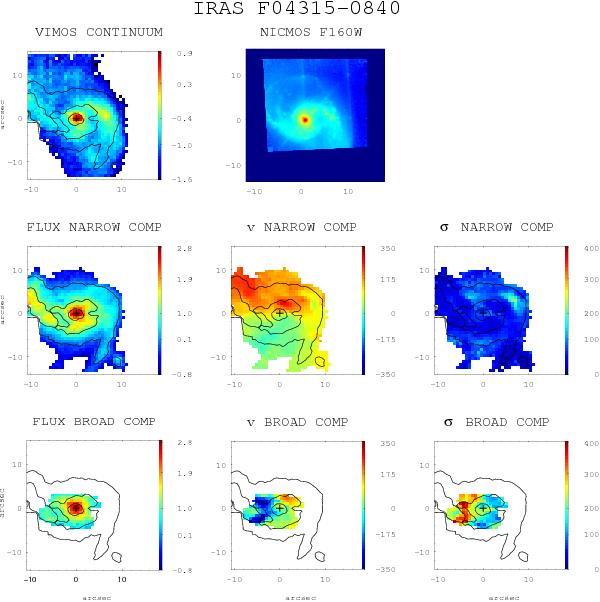Fig. A.4

(General comments about the panels as in Fig. A.1.) IRAS F04315-0840 (NGC 1614): this is a well-studied, post-coalescence late merger, with a bright, spiral structure of a length scale of few kpcs. The velocity field of the narrow component is somewhat distorted and chaotic with an amplitude of 324 km s-1. Its velocity dispersion map shows an offset peak of ~220 km s-1 at around 2.4 kpc from the nucleus in the western arm. The spectra in the inner regions are complex, and a secondary broad component covers a relatively large area of about 8.6 kpc2. The projection of the kinematic major axes of the narrow (main) and broad components differs by ~90°. The blueshifted region of the velocity field of the broad component has the largest velocity dispersion (i.e., ~400 km s-1). All this supports the hypothesis of a dusty outflow, where the receding components (which are behind the disk) are obscured, making the whole profile relatively narrow with respect to the approaching component. This object has been analyzed in Bellocchi et al. (2012). The spatial scale is 0.325 kpc/′′.
Current usage metrics show cumulative count of Article Views (full-text article views including HTML views, PDF and ePub downloads, according to the available data) and Abstracts Views on Vision4Press platform.
Data correspond to usage on the plateform after 2015. The current usage metrics is available 48-96 hours after online publication and is updated daily on week days.
Initial download of the metrics may take a while.


